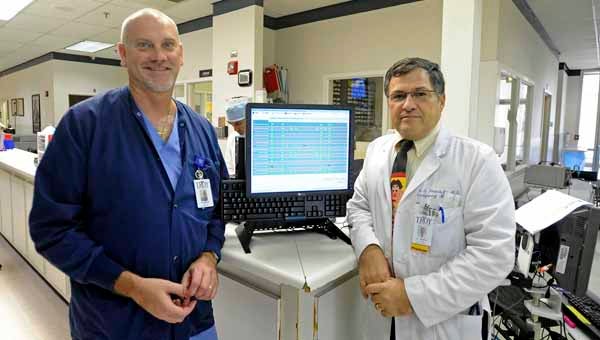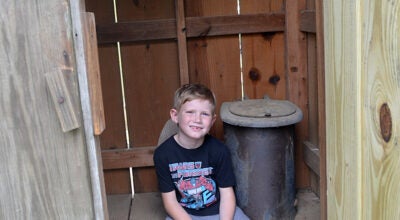Troy Regional joins network to help care for stroke patients
Published 11:00 pm Tuesday, August 6, 2013

Troy Regional Medical Center Emergency Room Director Shannon Godsave and Dr. Lenny Nasca believe the hospital’s participation in a stroke care network will save valuable time in treating stroke patients.
Troy Regional Medical Center has one more tool to use when it comes to keeping Pike County healthy.
The hospital is now linked by computer to the Southeast Alabama Stroke Care Network. It’s a process that has been a year in the making and is set to go live at Troy Regional on Aug. 26.
“This is another way we are improving care for our patients,” said Dr. Lenny Nasca, TRMC emergency physician.
When paramedics believe a patient is having a stroke, instead of driving to a hospital only to find out it isn’t the best place to serve the patient, paramedics will contact the network based at UAB, Nasca said.
“The Stroke Care Network looks at which hospital is not only the closest, but also who can help the fastest,” Nasca explained.
“Time is of the essence for stroke patients.”
For patients who come in to the hospital, a computer located in the TRMC emergency room shows ER staff members what hospitals are available for different levels of care, so if Troy Regional needs to send a stroke patient somewhere else, there is no doubt about where they should go.
Hospitals show up on the computer monitor as either level 1, 2, or 3 and display in green if the facility is accepting patients or red if they are not.
Level 1 facilities offer the highest level of care with a neurosurgeon in house; Level 2 facilities have a neurosurgeon on call; and Level 3 facilities are able to contact a neurosurgeon for consultation.
TRMC is a level 3 facility.
“We can medically stabilize the patient, perform a CAT scan and administer a ‘clot buster’ here,” Nasca said.
If a stroke patient waited longer than four hours to seek medical attention, TRMC staff could use the Stroke Care Network to find the closest facility prepared to administer isolated vessel clot busters, Nasca explained.
“This system is important because it enables us to communicate with the southeast region in order to provide the best care possible to stroke patients,” said Shannon Godsave, ER director.
And Godsave noted that the faster a stroke patient seeks treatment, the more effective that treatment can be.
“I see so many people who think they can go back to bed and wake up well,” Godsave said. “Getting information out to the community about stroke symptoms is important for us to do so that people seek treatment.”
High blood pressure, atrial fibrillation, high cholesterol, smoking, diabetes, poor circulation, obesity and family history are all risk factors when it comes to strokes. To catch warning signs early, remember “FAST” – face, arm, speech and time.
Look for an uneven smile, check to see if one arm is week, listen for slurred speech and call 911 right away.




